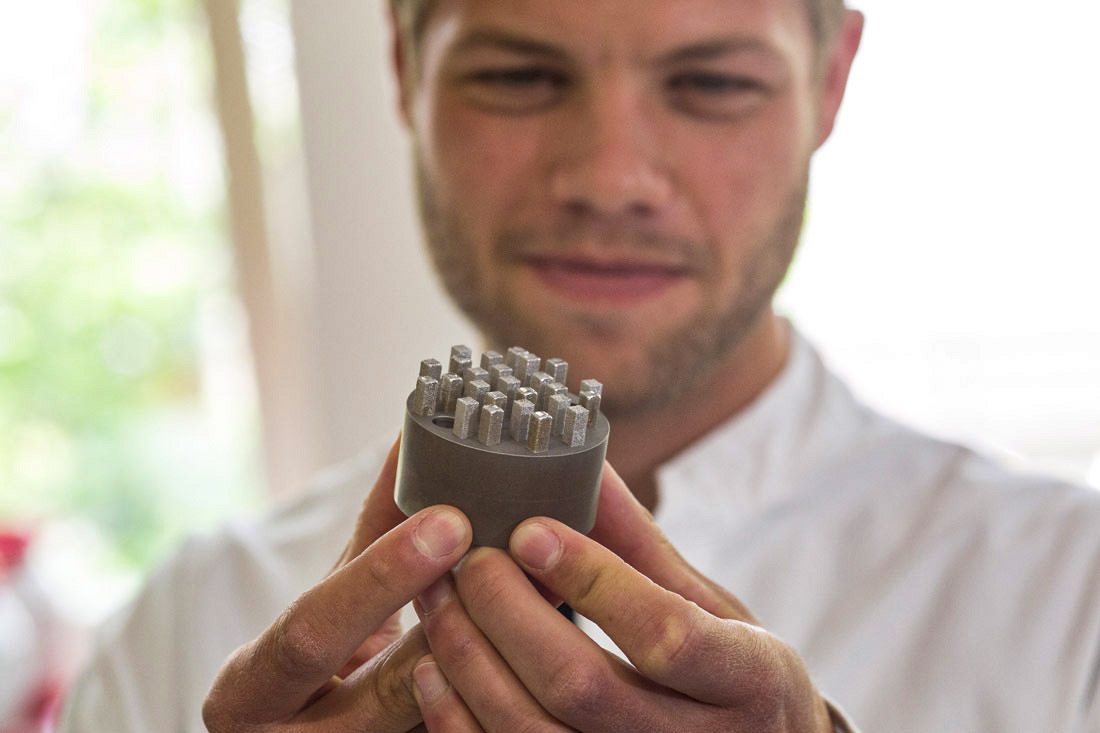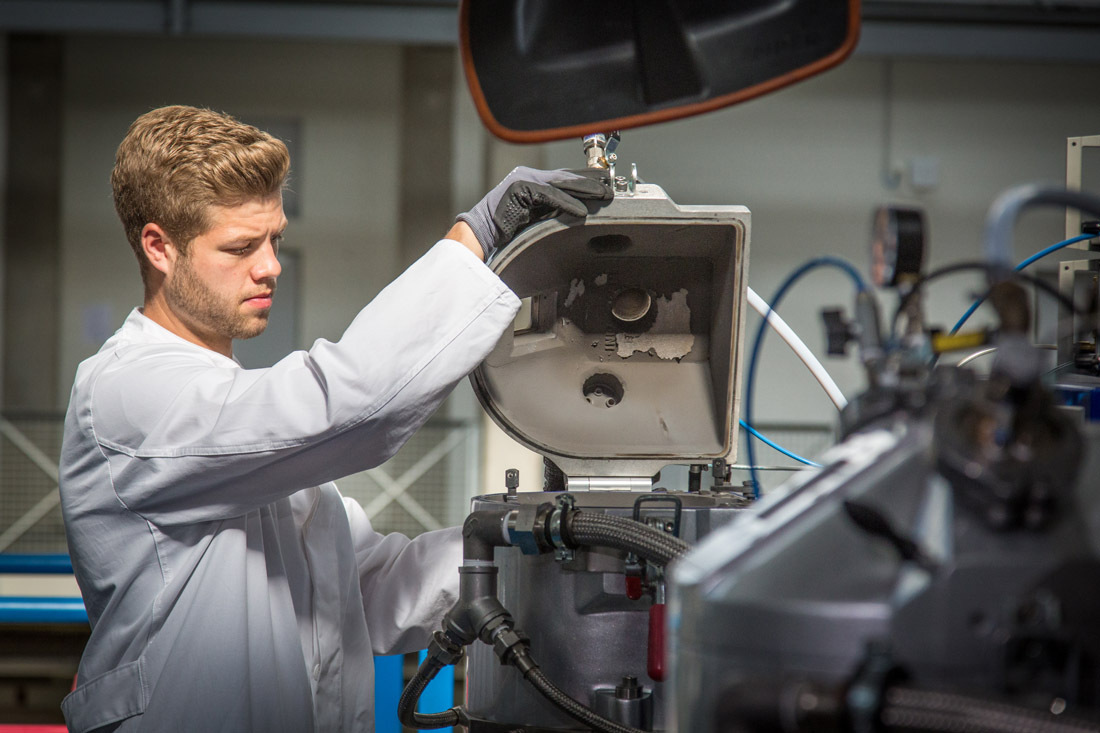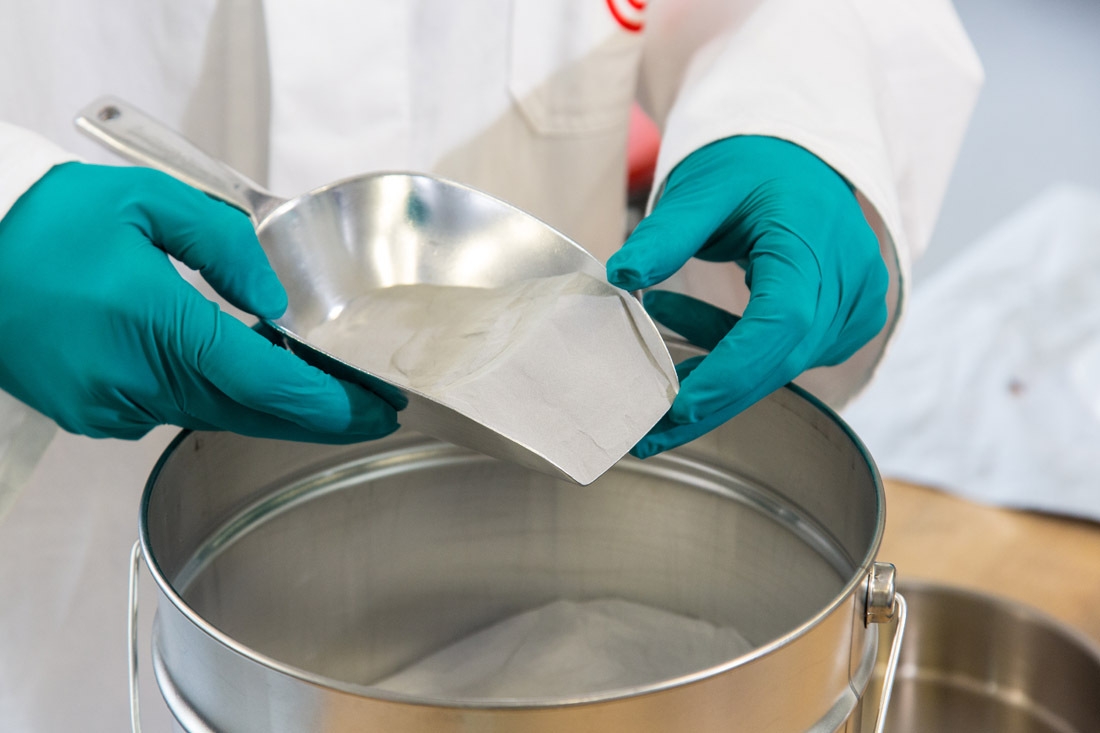Launching a career in rocket science
Aerospace
Marcel Hesselmann is a young scientist who is currently researching how using innovative new materials can cut the cost of sending rockets into space. Working as part of the @ALL collaborative project, he's using the facilities at ECOMAT in Bremen to launch his professional career.
Aluminium is a popular material for aerospace applications: it's lightweight, stable, easily procured and inexpensive. However, on its own, aluminium is unable to withstand the extreme conditions of a rocket launch. This is why alloys are used in the construction of assemblies and components such rocket engines. These alloys frequently involve rare earths or other extremely expensive metals, and this can greatly increase costs and reduce efficiency.
However, it's not merely the drive to cut costs that makes the search for new materials such an important step on the path to conquering space. There's also a much more important factor: materials with new properties and improved lightweight structures give engineers greater scope for building more powerful rockets that can carry greater payloads.
Bremen is also playing a role in this, thanks to the help provided by the Leibniz-Institut für Werkstofforientierte Technologien (Leibniz Institute for Materials Engineering (IWT)). To be more precise, the help is being provided by Marcel Hesselmann, a research associate at the Leibniz Institut in Bremen. He is part of the "@ALL – Additive Fertigung für Aluminium-Trägerraketenstrukturen" (additive manufacturing for aluminium launch vehicle structures) (German) project (PDF, p.8), a joint research project involving several members of the ECOMAT research and technology centre: Airbus, the ArianeGroup and the IWT itself. The companies Materialise and Innojoin, and the Alfred Wegener Institute, and the Helmholtz Centre for Polar and Marine Research (AWI) are also involved.
On the search for the correct ingredients
At the age of only 27, Hesselmann is responsible for a sub-project within the overall research project: his specialist area is the development of innovative aluminium-based alloys. "At the IWT, we're searching for the right combination of alloy elements to find the ideal conditions for a metal alloy that is not only able to withstand the harsh conditions of use in space, but can also be manufactured by 3D printing", said Hesselmann.

The young scientist compares his work to baking a bread roll: only by using the correct mixture of ingredients and the right baking process can we create a crispy, airy, golden brown roll.
The same is more or less true for working with a 3D printer. Having the right combination of alloy elements, metal powder with the right grain size and a manufacturing process that is precisely calibrated to handle these ingredients are the prerequisites for creating a 3D-printed material that will become part of a rocket.
A truly material world
Hesselmann has been part of the @ALL project since 2019. Originally from Wildeshausen, Germany, Hesselmann studied industrial engineering at the University of Bremen before taking his masters in production technology. He has always been interested in materials, especially in the context of 3D printing: even as a student, he worked for Materialise, a 3D printing service provider in Bremen.
"Materials are the foundation of everything around us. Metals are particularly fascinating because of the way they can be adapted to suit almost any purpose. They are extremely versatile", said the young scientist, who has also dedicated his master's thesis to the @ALL project.
Combining Bremen's strengths of 3D printing and materials science
The search for a resilient yet lightweight new alloy is only part of the @ALL project. In addition, the consortium is also engaged in optimising aerospace components so that they can be manufactured by 3D printing in future, saving both weight and materials. These are discoveries that will be applied in the launch vehicles of the future, such as Ariane 6, the latest European project.
Researchers must constantly be mindful of the extreme environments involved in space flight: temperatures of -200 degrees in space, rapid changes in pressure and powerful vibrations.
ECOMAT research and development centre used

Optimising the quality of components so that they can withstand the rigours of space requires special equipment such as the "Hippe", the hot isostatic press. This is a device that applies pressure and heat to a component at the same time. It is used to rework workpieces used in aviation and aerospace. "The HIP process is an ideal adjunct to the process chain. It ensures that we can meet the stringent quality requirements demanded in this sector", said Hesselmann.
The ECOMAT has one of these presses. This scientific research centre, based in Bremen's Airport-Stadt (the industrial park around Bremen's airport), was an important location for the @ALL project team. The @ALL consortium's project team held regular meetings at ECOMAT until the pandemic forced them to move online. "Bremen is a centre of excellence when it comes to powder-based materials. The city not only has leading research institutes but also companies that are actively involved in the 3D printing of metals. The interaction between them is extremely valuable", said Hesselmann.
Interdisciplinary projects at ECOMAT the starting point for a career in research
Materials specialists all agree that working together in interdisciplinary research projects, whether in person or virtually, is of great benefit to everyone involved. "Here in Bremen, we also work closely together with other institutes, such as the IFAM, and also with innovative companies such as Materialise. We can quickly pool our experiences and establish contacts“
Once the @ALL project is complete, its findings will be released in a scientific publication, making them available to the international research community. And for Hesselmann himself, this is only the start of the journey. He's currently working on his doctoral thesis and is already involved in other research projects.
By working in this project, in which science and industry were closely interwoven with interdisciplinary research groups, this young scientist has created a solid foundation for his future career in research. "This project was a great introduction to a career in science: I have been able to gain so many valuable experiences", concluded Hesselmann.
Read @ALL about it
The @ALL project ran as part of Bremen's aviation and aerospace research program 2020. Its aim was to investigate if additive manufacturing (3D printing) processes could be used to create the secondary structures used in launch vehicles from aluminium alloys. This interdisciplinary consortium, involving scientists and local businesses, received funding of 1.1 million Euros to organise this project, which ran from 2017 to the end of 2020. The project was co-financed by the European Regional Development Fund (ERDF), to promote the regional development of Bremen.
Success Stories
Bremen is Germany’s sixth-largest industrial hub in terms of revenue. Whether the sector is aerospace, food, automotive, shipping or steel production, Bremen has always been a major player.
Learn moreA century of aircraft construction in Bremen – in the post-war years, the "Airbus" project was emblematic of the history of the aviation industry in Bremen. It has been one of the Hanseatic city's most significant industrial sectors ever since.
See chronologyA century of aircraft construction in Bremen – the story starts in 1924 with the company "Focke-Wulf- Flugzeugbau AG". It marks the beginning of one of the Hanseatic city's most important industrial sectors. In 2024, Bremen is celebrating "100 Years of Aircraft Construction" with a series of anniversary celebrations.
See chronology
